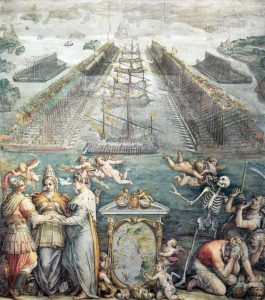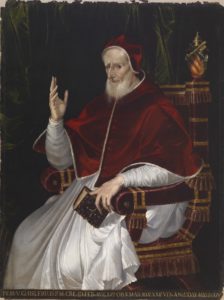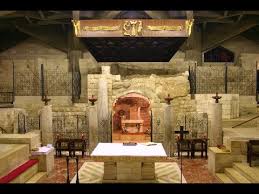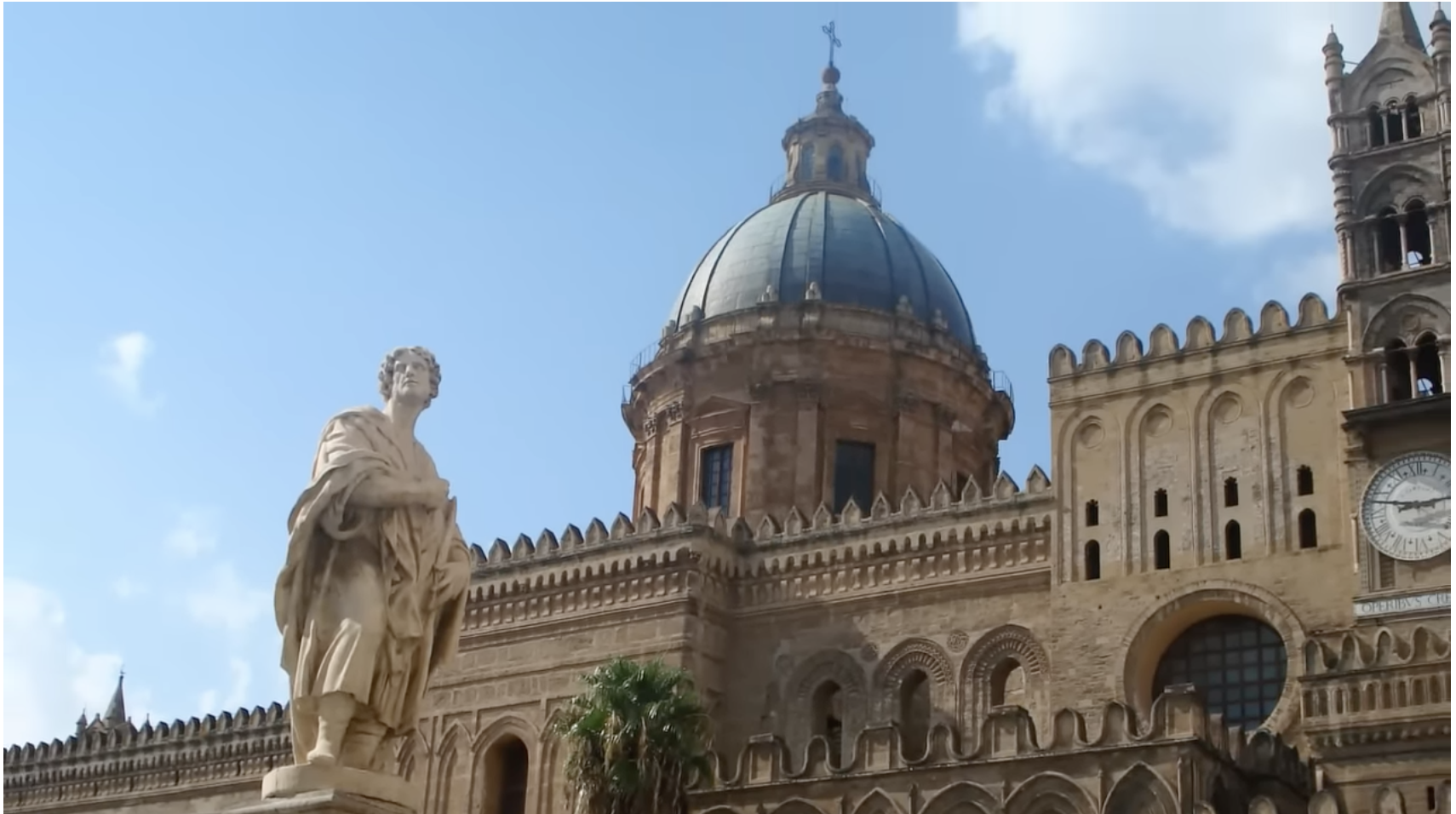Today marks the 450th anniversary of the death of St Pius V in Rome on May 1, 1572, six months after the great victory of Christian forces over the Turks at Lepanto. At the center of Pius V’s worries during the last months of his life was the defense of Christendom against Islam. Lepanto was not for him an end but the beginning of a possible reconquest of the Christian East.
He wanted to immortalize the great naval battle at the Vatican in the Sala Regia, where sovereigns and ambassadors are received, entrusting the work to the great Giorgio Vasari. On the west wall of the Sala Regia, in the space between the door that leads to the Sistine Chapel and the door that opens to the Sala Regia, Vasari depicted the preparatory phase of the Battle of Lepanto. On the same wall, between the door that leads to the Papal Sacristy and the door that leads into the Sala Regia, the painter depicted the encounter between the Christian and Ottoman fleets. The battle is also shown taking place in Heaven, with Christ with a lightning bolt in hand, followed by St. Peter and St. Paul.
Toward the end of 1571, the chronic kidney and bladder disease that afflicted Pius V intensified. In the middle of March 1572, the pain became excruciating, but the pope preferred to suffer still more rather than to be operated on.
It was in these days that the Lord revealed to him the day and hour of his death. Violent pains tormented him, but the pope wanted to endure these sufferings so that he could increase the merit of his patience. He was frequently heard to sigh, lying prostrate before his Jesus crucified, kissing him and lovingly looking at him and saying to him: “Lord, increase the sufferings if you like, but also increase my patience.”

The historian Ludwig von Pastor recalls that, in addition to his physical pains, Pius V also had great spiritual suffering, above all due to the behavior of the great Catholic powers, which had not accepted his exhortation to unite themselves once more against the Turks. Pius V had hoped to live to see the destruction of the Ottoman Empire, but now, through the mysterious designs of God, he saw the hour of triumph, which he had believed was drawing near, grow distant.
Despite his sufferings, on April 21, with a final surge of strength, the Holy Father made known his desire to visit the seven basilicas of Rome. In vain, cardinals, doctors, and family members tried to dissuade him. He went out on foot, supported by two servants, so pale and weak that prince Marco Colonna, meeting him on the street, begged him to return on a litter to the Vatican. Pius politely refused and continued his walk. When he came to the Scala Santa (near the Basilica of St. John Lateran), he kissed the last step three times.
In order to die as a simple religious, he put on the white habit of St. Dominic, and asked Bishop Giuseppe Pamfili, the sacristan of St. Peter’s Basilica, to administer Extreme Unction.
To the other prelates who assisted him, Pius V said: “My dearest sons, the hour has come to pay the final debt to nature as a man, by means of death, so that my flesh may return to the dust from which it was formed, and my soul may return to God who created it. If you have loved my mortal life, full of an infinite number of miseries, you should love even more the immutable and happy life that the Mercy of God, as I hope, shall soon grant to me in Heaven, among the angels and saints.”

But even in those final hours, he didn’t forget the threat to Christendom and the Church’s future:
You know with how much zeal I have labored for the happy success of the Christian armadas opened by the victory of Lepanto. . .but my sins have not made me worthy to see this triumph, and they deprive me of the great consolation that I would have had in seeing religion restored in those places from which it had been banned. I humbly adore the divine judgments and I accept the Lord’s will. I commend to you, however, the Holy Church, which I have loved so much. Do your best to elect a zealous successor, who will seek only the glory of the Savior and who will not have any other desire than the good of the Church and the honor of the Apostolic See.
On his deathbed, casting a final glance toward the Church on earth, which he was leaving for the Church of Heaven, he recited with a faltering voice the verse of one of the hymns of the Easter season: “Creator of men, grant that in these days filled with the joy of Easter, you may preserve your people from all the assaults of death.” Finally he extended his hands in the form of a cross and he sweetly breathed forth his soul and restored it to the Creator.
It was the evening of May 1, 1572. Pius V had reached the age of sixty-eight and had held the Chair of Peter for six years, seven months, and twenty-three days. That same day, Teresa of Avila had a vision of the pope, who from Heaven encouraged her to continue her work, promising that he would assist her.
Pius V was beatified by Clement X on May 1, 1672, and canonized by Clement XI on May 22, 1712. Today his remains rest in the Sistine Chapel of St. Mary Major. In this chapel, a solemn Mass in his memory was celebrated yesterday, by Msgr. Marco Agostini, in the ancient Roman Rite which he had restored with the bull Quo primum of 14 July 1570.
St. Pius V, ora pro nobis.
Images (above): * The Battle of Lepanto (The Fleets Engaging Each Other by Giorgio Vasari, begun 1572 [Sala Regia, postolic Palace, Vatican]. ** Pope Pius V by Bartolomeo Passarotti, c. 1566 [Walters Art Museum, Baltimore]. Below. Roberto de Mattei’s new biography of Pope St. Pius V.
You may also enjoy:
G.K. Chesterton’s Lepanto
Tracey Rowlands’ Nine Centuries of Chivalry
















